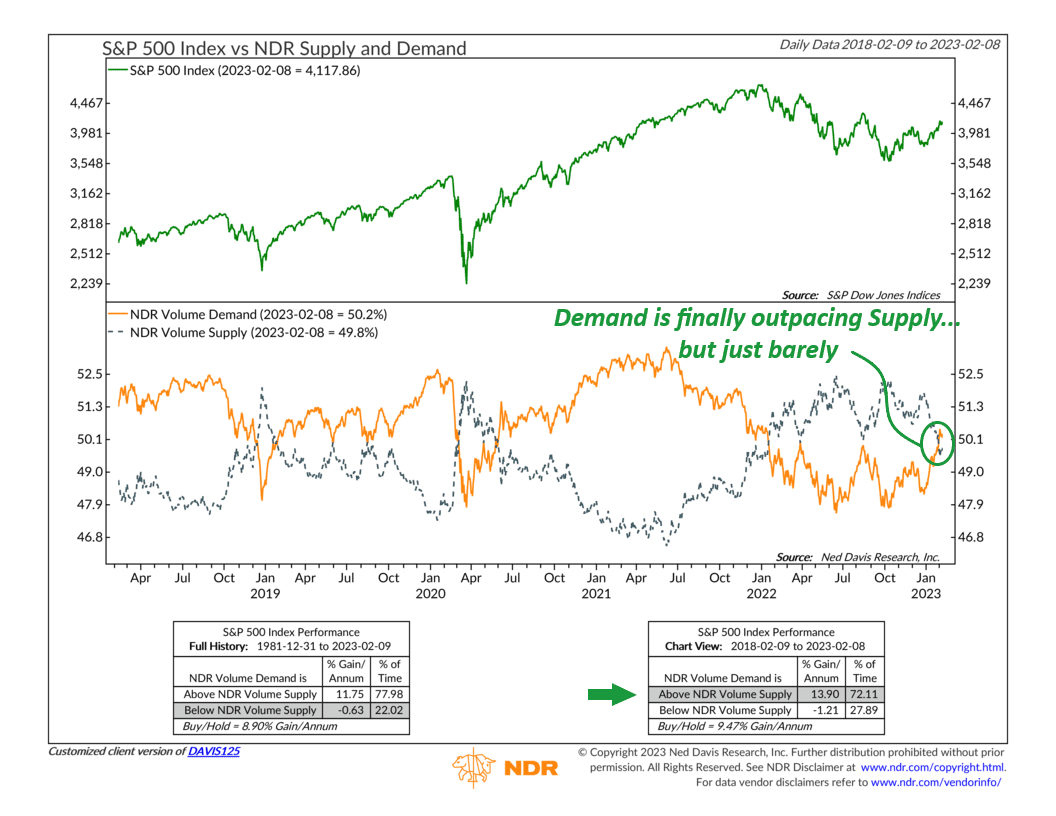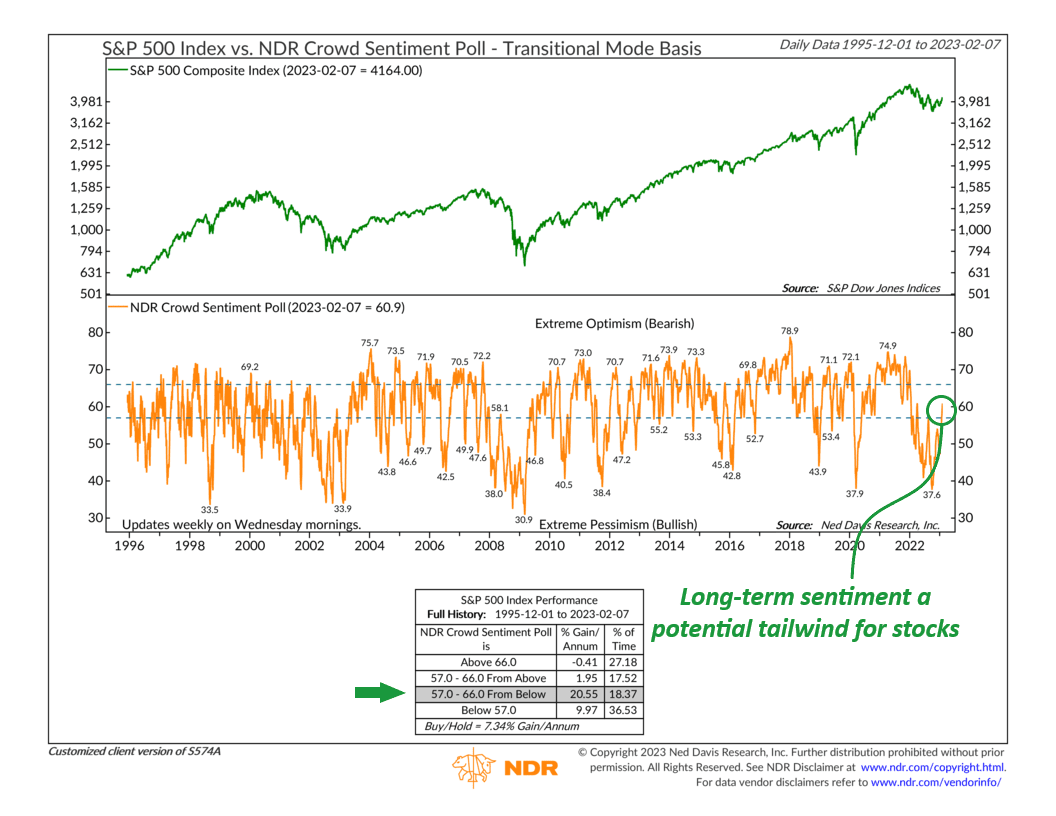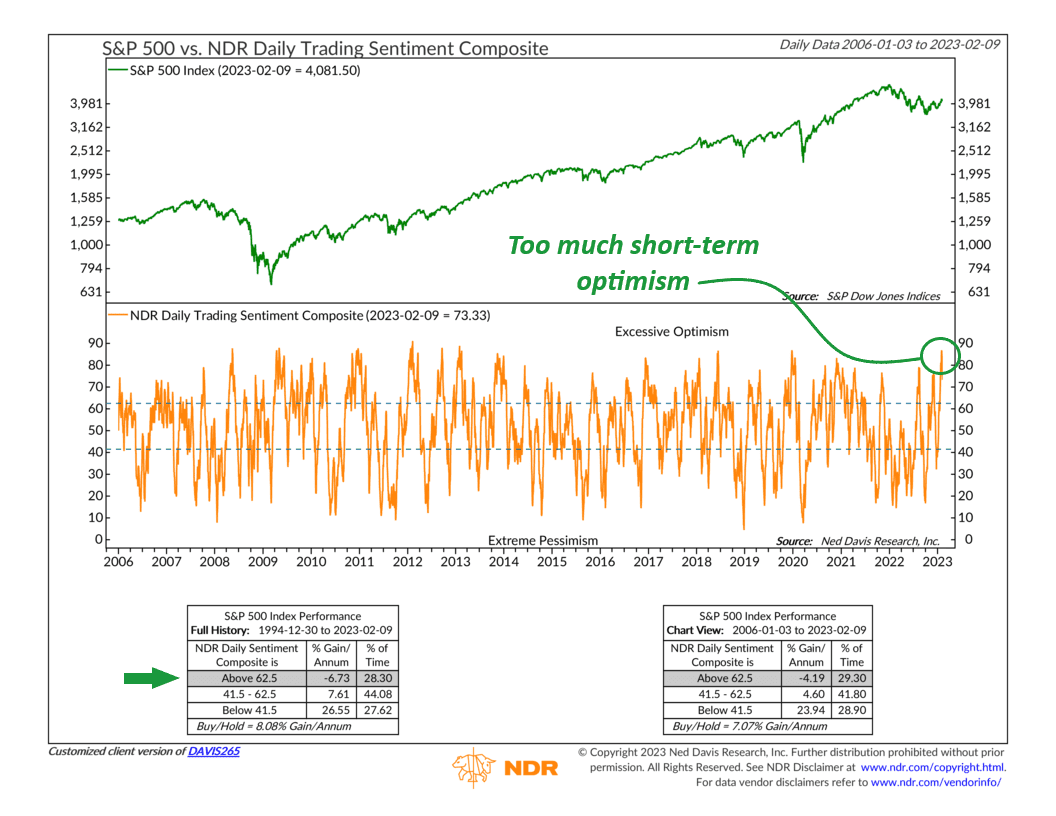OVERVIEW
U.S. stocks were in the red last week, with all three major indices closing lower. The S&P 500 fell 1.11%, the Dow declined 0.17%, and the Nasdaq dropped 2.41%.
Foreign stocks were down as well. Developed country stocks declined 1.59%, and emerging markets dropped 2.41%.
A spike in the 10-year Treasury rate to 3.74% resulted in losses for U.S. bonds. Intermediate-term Treasury prices fell 1.24%, and long-term Treasuries declined 3.15%. As for corporate bonds, investment-grade issues fell 1.82%, and high-yield (junk) issues dropped 1.78%. Municipal bonds were down 0.68%, and inflation-protected Treasuries (TIPS) dropped nearly 0.5%.
Commodities were a bright spot for the week, with a broad basket index climbing 1.5%. Most of this was due to a nearly 8.5% surge in oil prices. Corn was up slightly, roughly 0.18%, while gold fell 0.11%. The U.S. dollar strengthened almost 0.7%, while real estate declined over 2% to end the week.
KEY CONSIDERATIONS
Need Bulls to Have a Bull Market – We’re finally starting to see demand come back a bit in the stock market.
As the chart below shows, the amount of volume in stocks advancing in price (volume-demand) is outpacing the volume in stocks declining in price (volume-supply) for the first time in over a year.

Historically, all of the stock market’s gains have come when demand is outstripping supply, as measured by this indicator. This is an encouraging sign—if it stays positive.
But, of course, it’s just barely positive now; it could easily flip back to negative. And indeed, it looks like it’s about to do just that. So, it’s probably too early to say that this indicator is giving anything close to an all-clear sign just yet.
The good news, though, is that this rally has the backing of another indicator that tracks long-term sentiment in the market.
The NDR Crowd Sentiment Poll, shown below, recently rose into a zone that has historically coincided with the strongest average annualized returns for the S&P 500 stock index.

As a contrarian indicator, this measure considers low readings (extreme pessimism) to be bullish, whereas high readings (excessive optimism) are bearish.
As you can see on the chart, the indicator bottomed out at an extremely low reading (a sign of high pessimism) near the stock market’s bottom in October last year. This high level of pessimism and subsequent reversal has resulted in strong gains for the stock market ever since.
According to this indicator, the stock market should enjoy a long-term tailwind until sentiment reaches the upper zone of this indicator—indicative of too much optimism.
With that said, however, the stock market did run into a speed bump last week. This is likely explained by this last indicator which shows short-term sentiment in the stock market.

Unlike the previous indicator, this sentiment indicator measures investment sentiment on a much shorter-term basis—think days and weeks.
As you can see on the chart, it recently reached its highest level since 2019, a sign of excessive optimism among investors. Basically, it appears that investors got a little too excited from the beginning-of-the-year rally, and we are seeing a pullback in prices now that optimism has peaked.
The bottom line, though, is that you need to have bulls to have a bull market. And we are finally starting to see those bulls come back. If it can be sustained, it would be an encouraging sign for the long term.
But that’s a big if. In the short term, we had too much optimism, which led to a pause in the rally. Whether the rally can continue from here depends on whether volume demand can hold up.
This is intended for informational purposes only and should not be used as the primary basis for an investment decision. Consult an advisor for your personal situation.
Indices mentioned are unmanaged, do not incur fees, and cannot be invested into directly.
Past performance does not guarantee future results.
The post Need Bulls to Have a Bull Market first appeared on NelsonCorp.com.